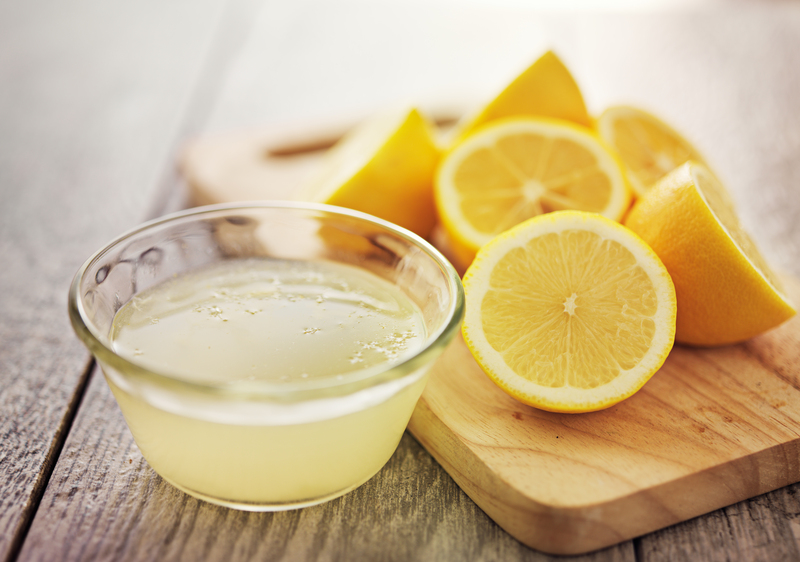Wall Cleaning: Ultimate Damage-Free Guide
Posted on 20/09/2025
Maintaining clean walls can significantly enhance the overall aesthetics and ambiance of your home. However, it's essential to clean your walls without causing any damage to the paint, wallpaper, or surface. This comprehensive guide will walk you through various techniques and tips to achieve a spotless, damage-free finish.
Why It's Important to Clean Your Walls
Walls accumulate dirt, dust, fingerprints, and various stains over time. Regular cleaning not only improves the appearance of your home but also helps maintain a healthy living environment by reducing allergens and bacteria. Clean walls can also add value to your property, making it more appealing to potential buyers.

Preparation: What You Need Before You Start
Before diving into the cleaning process, gather your materials. Here's a list of essential items:
- Soft microfiber cloths
- Sponges
- Bucket
- Warm water
- Mild dish soap
- White vinegar (optional)
- Baking soda (optional)
- Wall-safe cleaning products
- Soft-bristle brush
- Dry towels
- Painter's tape and plastic sheeting (for protecting nearby surfaces)
Step-by-Step Wall Cleaning Process
Let's break down the wall cleaning process into manageable steps:
1. Test the Cleaning Solution
Always start by testing your cleaning solution on a small, inconspicuous area of the wall. Apply a small amount of your chosen cleaning agent (diluted dish soap, vinegar solution, or specialized wall cleaner) to ensure it doesn't damage the paint or wallpaper. Wait for a few minutes and check for any adverse reactions.
2. Dust and Vacuum
Begin by removing dust and cobwebs from the walls using a microfiber cloth or a vacuum cleaner with a brush attachment. This step is crucial to prevent dirt from smearing and creating more significant stains during the cleaning process.
3. Prepare Your Cleaning Solution
In a bucket, mix warm water with a small amount of mild dish soap. If you prefer a natural solution, add a few tablespoons of white vinegar instead of soap. For stubborn stains, a paste made from baking soda and water can work wonders. Avoid using harsh chemicals, as they can damage your walls' finish.
4. Clean Wall Sections
Dip a soft cloth or sponge into the cleaning solution and wring out excess water. Start cleaning from the top of the wall and work your way down in small sections. This way, you can ensure even coverage and prevent streaks. Use gentle, circular motions to remove dirt and stains without applying too much pressure.
5. Rinse and Dry
After cleaning a section, rinse the cloth or sponge in clean water and wipe away any soapy residue. Use a dry towel to blot the area and remove excess moisture. This step is essential to prevent water spots and damage to the wall surface.
Troubleshooting Common Issues
While cleaning walls, you might encounter some challenges. Here are solutions to common problems:
1. Removing Stubborn Stains
For tough stains like grease, crayon, or ink, create a paste using baking soda and a few drops of water. Apply the paste to the stain, gently scrub with a soft-bristle brush, and wipe clean. Repeat if necessary.
2. Dealing with Mold and Mildew
Mold and mildew can be particularly problematic in damp areas like bathrooms. Use a mixture of one part white vinegar to three parts water to tackle these issues. Spray the solution on the affected area, let it sit for a few minutes, then scrub with a sponge. Rinse and dry thoroughly.
3. Addressing Wallpaper Issues
Cleaning wallpaper requires extra caution. Avoid excessive moisture, as it can damage the adhesive. Use a barely damp cloth and test in an inconspicuous area first. For stubborn stains, use a wallpaper-safe cleaner recommended by the manufacturer.
Pro Tips for Specific Wall Types
Different wall materials require tailored cleaning approaches. Here are some tips for various wall types:
1. Painted Walls
Use a mild soap and water solution for painted walls. Avoid abrasive cleaners that can damage paint. Satin or glossy finishes are more resilient, while matte paints require gentler handling.
2. Textured Walls
Textured walls can trap more dust and dirt. Use a soft-bristle brush to gently scrub textured surfaces. Vacuum with a brush attachment to remove loose debris before cleaning.
3. Paneling and Wooden Walls
For wooden walls or paneling, use a wood-safe cleaner or a mixture of water and mild soap. Avoid overwetting, as wood can warp or become damaged. Always follow up with a dry cloth to remove excess moisture.

Maintenance Tips for Long-Lasting Clean Walls
Frequent cleaning will preserve the beauty and integrity of your walls. Here are some maintenance tips:
- Dust walls regularly to prevent dirt buildup.
- Address stains and spills promptly to avoid permanent marks.
- Use doormats and encourage guests to remove shoes to reduce dirt transfer.
- Consider applying a coat of paint with a washable finish for easier maintenance.
Conclusion
Wall cleaning doesn't have to be a daunting task if approached with the right techniques and materials. By following this ultimate damage-free guide, you can ensure that your walls remain pristine and visually appealing for years to come. Remember to test cleaning solutions, use gentle methods, and tailor your approach to the specific type of wall finish. Happy cleaning!




